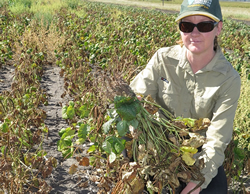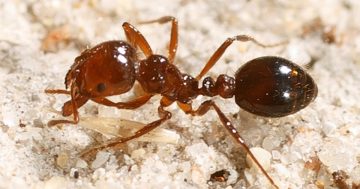 A Government researcher has discovered that two pathogens cause powdery mildew in mungbean, potentially unlocking new solutions for the industry.
A Government researcher has discovered that two pathogens cause powdery mildew in mungbean, potentially unlocking new solutions for the industry.
Plant Pathologist at the Department of Agriculture and Fisheries, Lisa Kelly (pictured) made the discovery that has eluded other researchers for at least 60 years.
Minister for Agricultural Industry Development and Fisheries, Mark Furner said it had been thought that only one pathogen, Podosphaera xanthii, caused the powdery mildew until Ms Kelly confirmed a second culprit lurking in the paddocks of mungbean and black gram in Australia — Erysiphe vignae sp. nov.
“This research finding paves the way to protect the mungbean industry, which has an export value of more than $100 million to Australia in 2021,” Mr Furner said.
“Powdery mildew has the potential to cause more than 40 per cent yield losses in mungbean crops, which is very costly to the growers who are mainly based in Queensland and northern NSW,” he said.
Mr Furner said while Podosphaera xanthii was known to impact a range of crops, the newly-discovered Erysiphe vignae sp. nov had so far been found only on Australian crops of mungbean and black gram, which is a species of bean popular in northern India.
He said despite this, it was likely the new pathogen could affect other crops.
Ms Kelly said she collected mungbean plants infected with powdery mildew from growers’ paddocks and identified the pathogen species under the microscope and through DNA sequencing.
“It was surprising to find that mungbean is infected by two very different species of powdery mildew and that one was an undescribed species which we got to name ourselves,” she said.
“This might help explain why powdery mildew is worse in some areas and seasons than others, and scientists around the world who work on mungbean will be able to see whether the newly-discovered Erysiphe vignae also infects crops outside of Australia,” Ms Kelly said.



